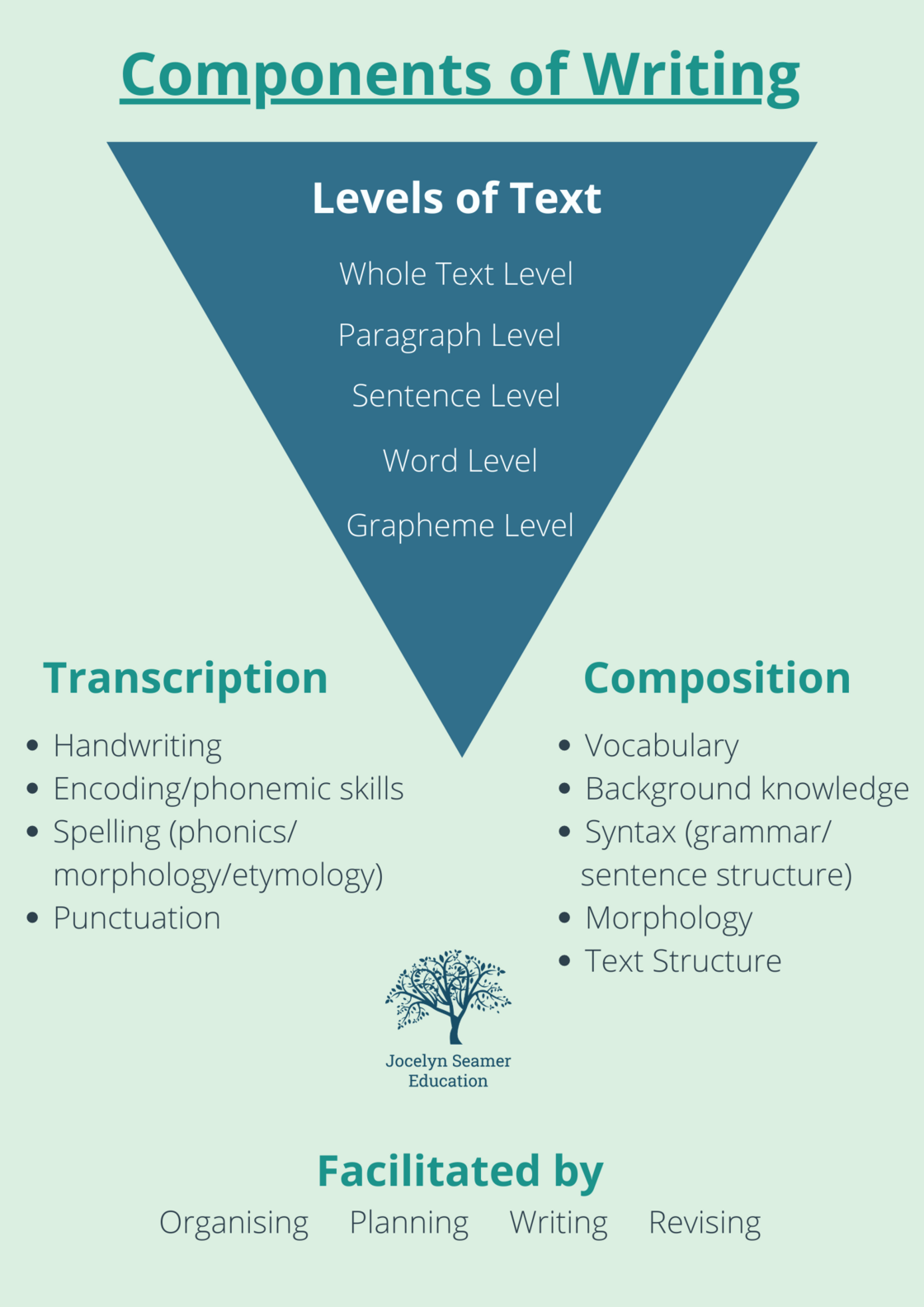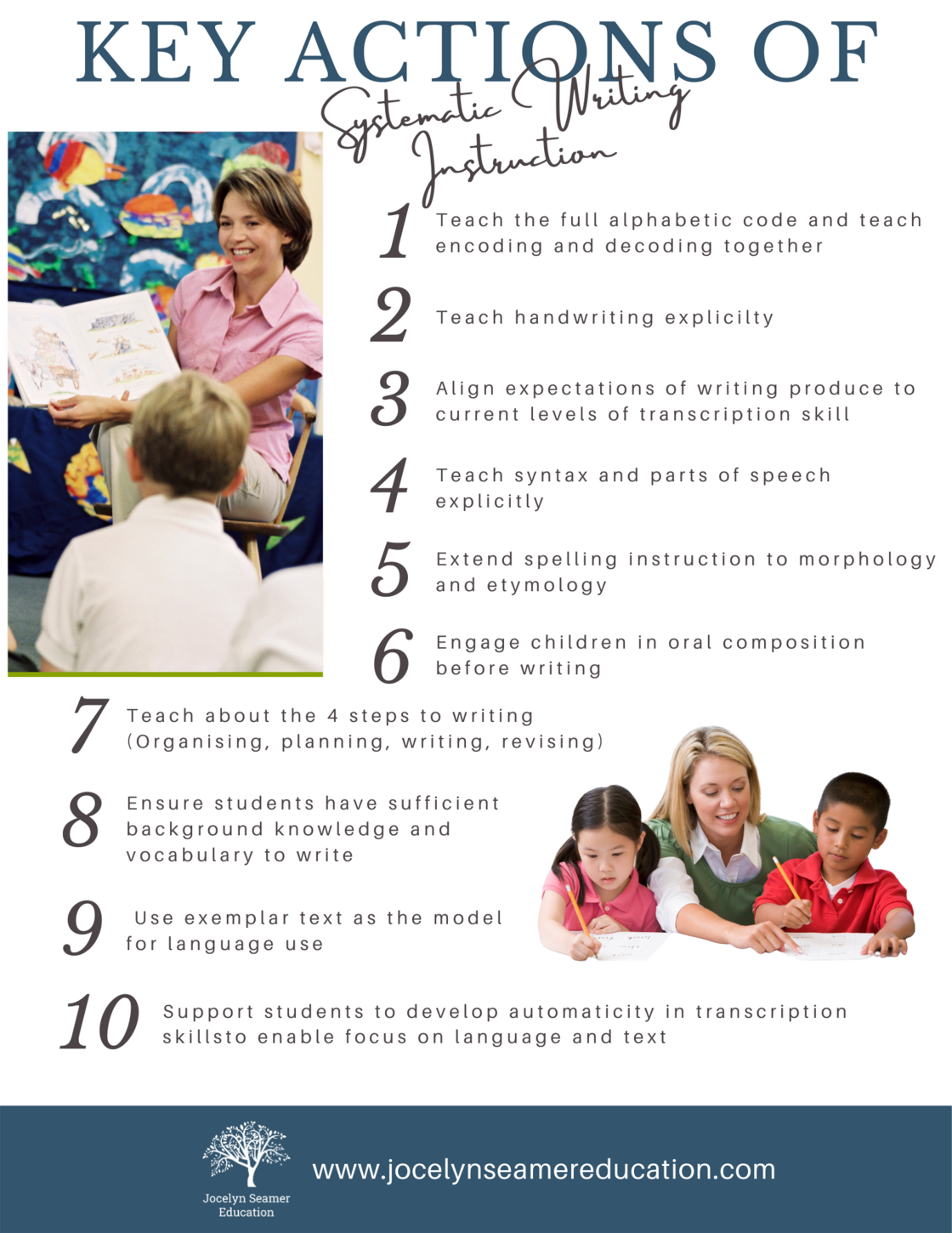'How to Teach Writing in the Early Primary Grades'

We have all known the feeling of frustration (and maybe helplessness) that comes with not really knowing how to get children writing. Some kids just seem to 'get it' and will happily sit down to write a story or information report for us while others struggle along, unable to complete the task no matter how many times we go through the 'modelled, shared, guided and independent' cycle that we have been taught is the key to good writing instruction.
When we try to figure out what we need to teach in reading instruction we have Scarborough’s Reading rope and the Big 6 to guide us. There is a plethora of information online, loads of YouTube clips and Facebook groups and we can be reasonably certain that the information we are accessing is good quality. But what about for writing?

I have certainly developed my share of grey hairs and done my share of hand wringing about whether or not what I was doing in writing was right. I have engaged in trial and error, done some things that I now see were ill-conceived (if well meaning) and generally done my best amidst a whole heap of uncertainty. Along the way, I have stumbled on some realisations and hit on some instructional gold that has lead me to understand that when we apply the principles of explicit teaching and high impact teaching strategies alongside a healthy dose of questioning of the way things have ‘always been done’, we can create some really awesome learning experiences for children.
To help you get your head around exactly what needs to be taught in a comprehensive approach to writing I have created a new teacher guide ‘How to Teach Writing in the Early Primary Grades’. This post will give you the ‘cliff notes’ but you can download the full version below.
- Writing Instruction can be divided into two components: composition and transcription. So much of what we do in classrooms focuses on composition and it is assumed that children will ‘pick up’ transcription from watching the teacher write on the board or engaging in ‘meaningful’ writing opportunities. This underlying belief is straight from the whole language playbook. Trust me, I spent plenty of time fighting for evidence based reading instruction while unwittingly trying to teach children to write using whole language practices! This went on until the day that I just thought, “This doesn’t make sense!” and set about making some changes.

- Transcription and Composition have both knowledge and skills that need to be developed to give children full understanding of the components of writing and the capacity to put pencil to paper and produce something that makes sense. ‘How to Teach Writing in the Early Primary Years’ outlines the knowledge AND skills needed for all aspects of writing.

- Just as reading instruction can be broken down into key actions, so can writing. Having examined both transcription and composition I have developed 10 Key Actions of Writing.

- You will notice that many of the key actions for systematic writing instruction are also included in systematic reading instruction. This is because reading and writing are the mirror of each other. If you teach children to read words, you should teach them to write those words at the same time. If you teach sentence reading, teach children to write those sentences in the same lesson. This is great news for our time poor schedules because it means that we can include both reading and writing in many of the lessons we conduct.

Getting a clear picture of what we need to teach in order to give children the foundation skills for writing helps us to evaluate our programs and approaches based on something other than a hunch. If you find yourself trawling through Pinterest, Teachers pay Teachers and your favourite subscription teacher sites looking for the ‘thing’ that will bring your writing instruction together, then download the ‘How to Teach Writing in the Early Primary Grades’ teaching guide. I know that you will find it helpful!

 Jocelyn Seamer Education
Jocelyn Seamer Education
0 comments
Leave a comment